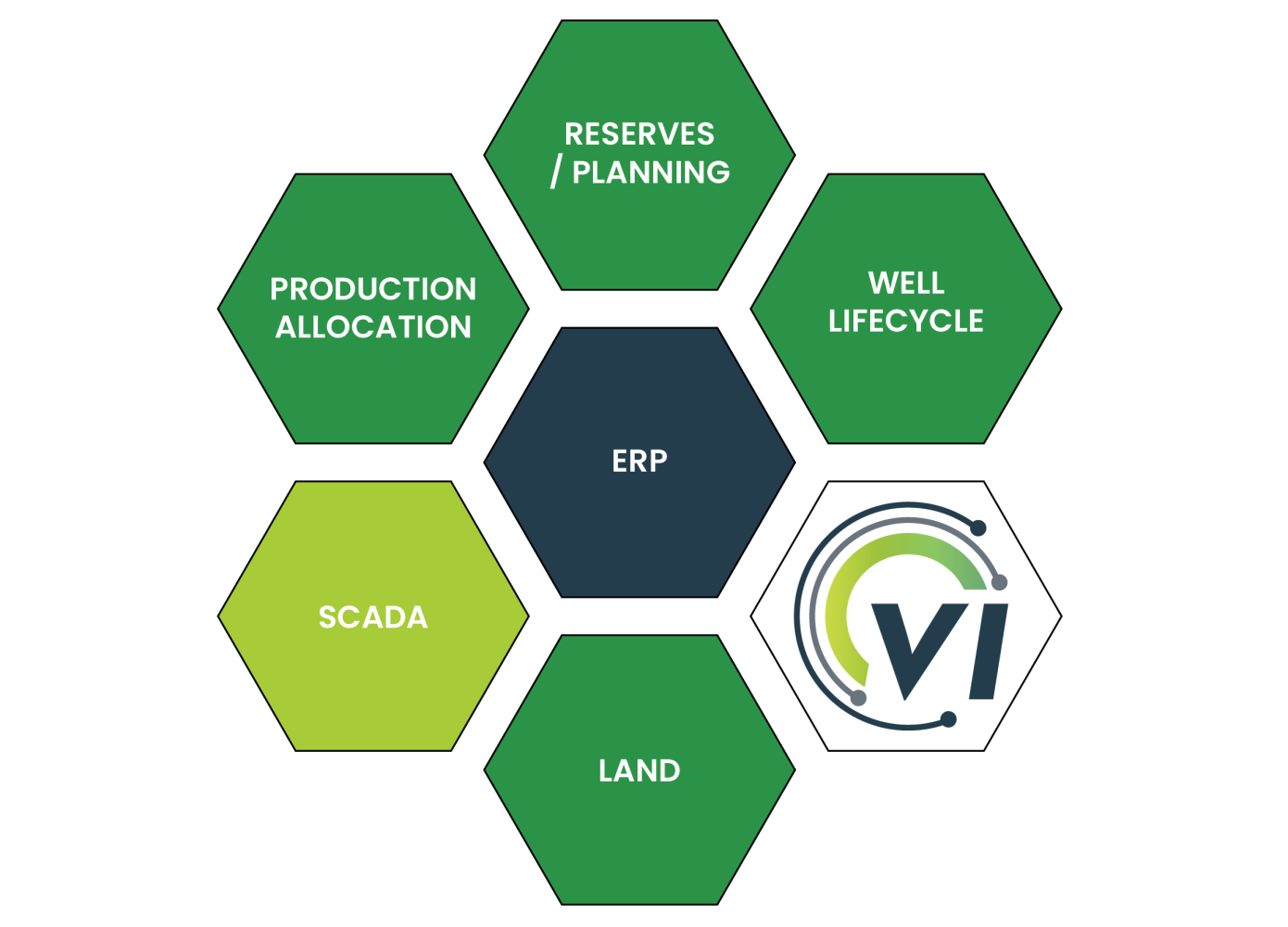A while back, we wrote about our framework on the E&P software categories that we call the Big Six.
Those categories are the most central, most integration, and most expensive pieces of software at a typical E&P:

As expected, we quickly heard the complaint “Why isn’t <insert software here> included?! It’s crucial to how we do things in <insert my department> at <insert my company>!”
Those complaints have a point – a typical E&P company uses dozens (even hundreds) of software applications that are enormous value adds. These can be as narrow as a hyper-niche application that’s used by just one or two people at a large company (yet is essential for a certain workflow). Or they can be industry-generic tools like Microsoft Office or project management tools with millions of users around the world. These tools *are* crucial, even if they don’t belong in the Big Six.
Those satellite tools around the Big Six are what we call the Distant Dozen. They represent an enormous value add for E&P’s and share a few key attributes at most companies:
- One or two integration points to other systems
- Occasionally (but not frequently) act as the “source of truth” for enterprise data
- Have a limited set of frequent users, or focus on a very specific workflow for a company

The value proposition of the Distant Dozen usually lies in serving the needs of a specific discipline or workflow. Let’s talk about a few examples…
Discipline-specific tools:
- Geoscience interpretation platforms are a great example of the Distant Dozen. Modern exploration and development geoscience work is inseparable from tools like Petra, Geographix, and Petrel. They are occasionally integrated with BI or reservoir engineering tools, but are often implemented as highly capable data islands.
- Electronic Drilling Recorders (EDRs) like Pason and TOTCO collect high-frequency drilling rig data and deliver it to off-site drilling engineers and operations geologists. EDRs are increasingly integrated with Well Lifecycle systems like WellView or WELLEZ, which is a great value add for improving data quality and automating daily reporting workflows.
- Artificial Lift Optimization platforms like XSPOC and Ambyint interpret high-frequency production data like pump cards and plunger parameters to diagnose and improve production. They are often integrated with a SCADA system, and promise to help enable things like Pump By Exception workflows, longer pump lives, and higher production rates.
Workflow-specific tools:
- Authority For Expenditure (AFE) tools took off in the 2000’s to replace traditional paper packets that would travel through inter-office mail. Tools like AFENav and add-ons to ERPs are great for SOX-compliant approval workflows. They usually integrate with the ERP (and occasionally the Well Lifecycle system) for cost tracking.
- Regulatory Reporting tools like ACTS, Siteview, and others help with facilities permitting, construction, and emissions reporting. This is an area that is evolving rapidly as a series of VC-backed startups focus on Greenhouse Gas (GHG) emissions reporting.
- Electronic Invoicing platforms like OpenInvoice and DocVue help automate the submissions, QC, and approval of invoices from vendors to operators. These specific-workflow approaches are increasingly merging into more comprehensive document management systems (DocVue) or source-to-pay systems (OpenInvoice/OpenTicket and ENGAGE).
While we call this group the Distant Dozen, the reality is that it includes 20 or 30 categories, depending on the E&P and its approach to enterprise software. GIS, CMMS, RTA, and a bunch of other acronyms fit here – essential applications that an E&P IT department needs to source, implement, and maintain to maximize worker productivity. Replacing these with something new doesn’t cause nearly the pain and suffering that a rip-and-replace of the Big Six causes, but they do need project management and a well-documented business case.
What’s the downside of getting the Distant Dozen wrong? We see a lot of companies that allow this list to bloat over time, with poorly utilized (and expensive!) software scattered around an organization. On the other hand, underinvestment in this area hurts the bottom line, leaving the staff less productive than they could be.
If you’re struggling with getting your arms around your tech stack, give us a call. We love helping our clients streamline and clean up their stacks, controlling costs while increasing capabilities. You aren’t alone – there are good solutions out there!


